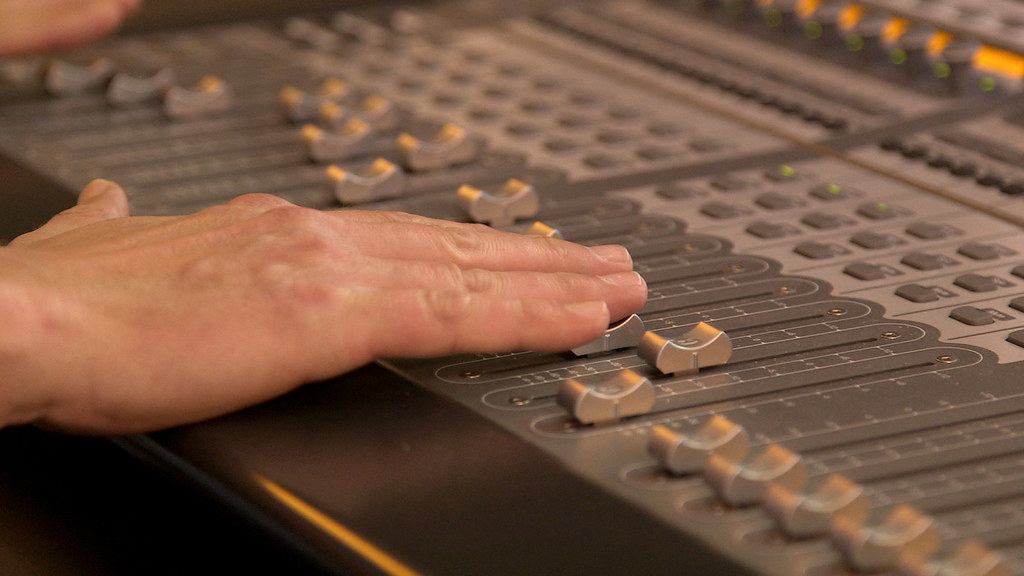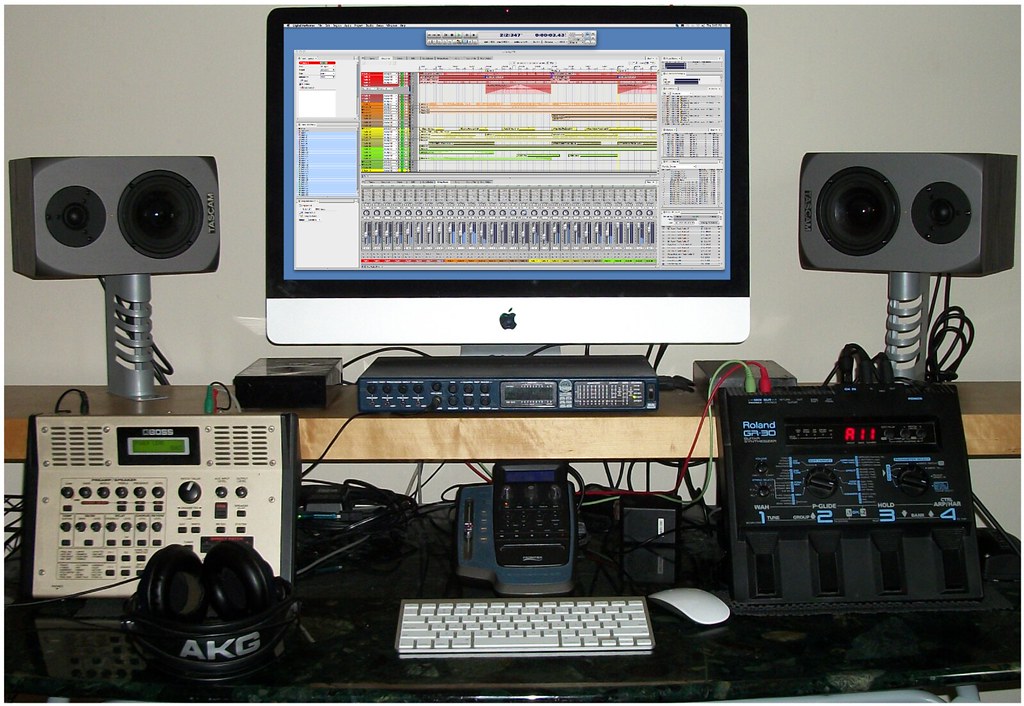Music production techniques are the sets of skills and strategies used by music producers to create high-quality music. These techniques involve a variety of tools and processes, from recording and editing to mixing and mastering. By mastering these techniques, producers can create unique and professional-sounding tracks that stand out in a crowded music industry. In this article, we will explore ten essential music production techniques for digital audio workstations (DAWs), including tips for recording, editing, mixing, and mastering. Whether you are a seasoned producer or just starting, these techniques will help you take your music production skills to the next level.
Table of Contents

Music Production Software
Music production software plays a crucial role in the music production process. Digital Audio Workstations (DAWs) are the primary software used for music production as they offer a wide range of tools and features for recording, editing, mixing, and mastering audio.
Overview of Different DAWs and Their Features
There are multiple DAWs available in the market, each with its own set of features and benefits. Some of the most popular DAWs used for music production are:
- Ableton Live
- FL Studio
- Logic Pro
- Pro Tools
- Cubase
- Studio One
Each of these DAWs has its own strengths and weaknesses, and the choice of which one to use will depend on personal preference, specific needs, and budget.
Benefits of Using Music Production Software
Music production software offers a variety of benefits that include:
- The ability to record and edit audio tracks with precision and ease
- A wide range of built-in effects and plugins for processing audio
- The ability to work with MIDI and virtual instruments
- The ability to mix and master audio tracks to achieve a professional sound
Comparison of Popular DAWs Such as Ableton Live, FL Studio, and Logic Pro
Let’s take a closer look at three of the most popular DAWs: Ableton Live, FL Studio, and Logic Pro.
Ableton Live
Ableton Live is a popular DAW among electronic music producers due to its powerful MIDI sequencing capabilities and built-in instruments and effects. It’s also great for live performances due to its intuitive interface and session view.
FL Studio
FL Studio is another popular DAW, known for its user-friendly interface and powerful mixer. It’s popular among hip-hop and electronic music producers due to its built-in drum sequencer and extensive library of virtual instruments.
Logic Pro
Logic Pro is a popular DAW among professional music producers and is known for its powerful audio editing features and built-in effects. It’s a great choice for recording live instruments and vocals, and its integration with Apple’s ecosystem makes it a popular choice for Mac users.
Whether you’re a beginner or a professional, choosing the right music production software is essential for creating high-quality music. Take the time to research and try out different options to find the one that works best for you.

Audio Recording Techniques
Recording audio is a crucial part of the music production process, and the right techniques can make a significant difference in the final product.
Best Practices for Recording Different Instruments
Different instruments require different recording techniques to achieve the best sound possible. Here are some best practices for recording common instruments:
- Drums: Use multiple microphones to capture the different parts of the drum kit and ensure a balanced sound. Experiment with different microphone placements to find the best position for each drum.
- Guitar: Place the microphone close to the guitar’s speaker to capture the tone of the instrument. Experiment with different microphone placements to find the sweet spot for capturing the guitar’s sound.
- Bass: Use a DI box to capture the bass’s direct signal, and blend it with a microphone to add warmth and depth. Experiment with different microphone placements to find the best position for the microphone.
- Piano: Use a stereo microphone setup to capture the piano’s full range of frequencies. Experiment with different microphone placements to find the best position for the microphones.
Tips for Recording Vocals
Recording vocals can be challenging, but with the right techniques, you can achieve a professional sound. Here are some tips for recording vocals:
- Use a pop filter to reduce plosives and sibilance, as they can be distracting and reduce the clarity of the vocal recording.
- Set up the microphone at the correct distance from the singer to achieve the desired sound. The distance between the microphone and the singer affects the tone and clarity of the vocal recording.
- Use headphones for monitoring to avoid bleed from the playback speakers. Bleed can affect the quality of the vocal recording.
- Record multiple takes and comp them together to create the perfect performance. This technique is useful when the singer cannot perform the entire song without errors.
Importance of Microphone Placement and Room Acoustics
Microphone placement and room acoustics are crucial factors in achieving a great sound when recording audio. Here are some tips for microphone placement:
- Experiment with different microphone placements to find the sweet spot for each instrument or vocal. The position of the microphone affects the tone and clarity of the recorded sound.
- Use a reflection filter or acoustic panel to reduce room reflections and improve the sound quality. Reflections can create unwanted echoes and reduce the clarity of the recorded sound.
- Consider the distance between the microphone and the sound source, as this can affect the tonal quality of the recording. The distance between the microphone and the sound source affects the balance between the direct and ambient sound.

Audio Editing Techniques
Audio editing is a crucial step in the music production process that helps achieve a polished and professional sound. Here are some essential audio editing techniques that can help you create high-quality music.
Overview of Different Audio Editing Software and Plugins
Various audio editing software and plugins are available, each with its own set of features and benefits. Some of the most popular options are:
- Adobe Audition: A multi-track recording studio that offers various features for music production and audio editing.
- iZotope RX: A comprehensive suite of audio restoration tools that can help clean up recordings and remove unwanted noise.
- Waves Restoration: A collection of audio restoration plugins that can help remove background noise and unwanted sounds.
- Melodyne: A pitch and time correction software that allows you to manipulate audio recordings in various ways.
Tips for Editing Audio Tracks
Here are some tips for editing audio tracks:
- Use a noise gate: A noise gate can help remove unwanted noise and improve the clarity of the recording.
- Use a de-esser: A de-esser can help reduce sibilance in vocal recordings and improve their quality.
- Use automation: Automation can help adjust the volume of individual tracks to achieve a balanced mix and ensure that each instrument is heard.
- Use crossfades: Crossfades can help smooth transitions between different audio clips, creating a seamless listening experience.
Techniques for Removing Background Noise and Unwanted Sounds
Removing background noise and unwanted sounds is a common task in audio editing. Here are some techniques for achieving this:
- Use a spectral editor: A spectral editor can help visually identify unwanted frequencies and remove them from the recording.
- Use a noise reduction plugin: A noise reduction plugin can help remove background noise from a recording without affecting the quality of the original sound.
- Use a de-clicker or de-crackler plugin: These plugins can help remove clicks and pops in a recording caused by dust, scratches, or other factors.

Audio Mixing Techniques
Mixing is the process of combining multiple audio tracks to create a balanced and polished sound. Here are some essential techniques to achieve a great mix:
Balancing Audio Tracks
The mixing process involves balancing the levels of different audio tracks to create a sense of space and depth in the mix. An effective mix should be balanced, clear, and dynamic, with each instrument and vocal sitting in its own space in the mix.
Importance of EQ and Compression
EQ and compression are two essential tools in the mixing process. EQ is used to adjust the tonal balance of individual tracks, while compression is used to control the dynamic range of a track or group of tracks. Proper use of EQ and compression can help achieve a more polished and professional sound in the mixes.
Tips for Balancing and Achieving a Great Mix
Here are some tips for achieving a balanced and great mix:
- Use panning to create space and separation between different instruments.
- Use EQ to remove unwanted frequencies and balance the tonal quality of each track.
- Use compression to control the dynamic range of individual tracks and create a more consistent sound.
- Use automation to adjust the volume and effects processing of individual tracks over time, creating a more dynamic and interesting mix.
Techniques for Creating Depth and Space in the Mix
Creating depth and space in a mix is essential for achieving a professional sound. Here are some techniques for achieving this:
- Use reverb to create a sense of space and depth in the mix.
- Use delay to create a sense of depth and movement in a mix.
- Use automation to create changes in spatial positioning over time, creating a dynamic and interesting mix.
By applying these mixing techniques, you can achieve a balanced, polished, and professional mix that will enhance your music production.

Advanced Music Production Techniques
Now that you are familiar with the basics, it is time to explore advanced music production techniques to take your music to the next level.
Techniques for Creating Different Types of Music
Different genres of music require different production techniques. Here are some techniques for creating different types of music:
- EDM: Create a pumping effect and a driving rhythm by using sidechain compression.
- Hip-hop: Create unique and interesting beats by using sampling and beat slicing.
- Rock: Achieve a big, powerful sound by experimenting with different microphone placements and processing techniques.
Strategies for Using Effects and Automation in Music Production
Effects and automation can add depth and complexity to your music productions. Here are some strategies for using them effectively:
- Use automation to create changes in the mix over time, such as volume changes or effects processing.
- Experiment with different types of effects, such as delay, reverb, and distortion, to create unique and interesting sounds.
- Use parallel processing to achieve a more complex and dynamic sound.
Tips for Mastering and Finalizing Music Productions
Mastering is the final step in the music production process and involves preparing the mix for distribution. Here are some tips for mastering your music productions:
- Use a reference track to compare your mix to a professionally mastered track.
- Balance the tonal quality and dynamic range of the mix by using EQ and compression.
- Increase the overall volume of the mix without causing distortion by using limiting.
Examples of Successful Music Productions
Listening to successful music productions can provide inspiration and insight into the music production process. Here are some examples of successful music productions:
| Artist | Track |
|---|---|
| Daft Punk | “Get Lucky” |
| Kendrick Lamar | “HUMBLE.” |
| Adele | “Hello” |
| Michael Jackson | “Billie Jean” |

Music Production Tips and Tricks
If you are looking to improve your music production skills, here are some essential tips and tricks:
Strategies for Overcoming Creative Blocks
As a musician or producer, creative blocks can be frustrating and demotivating. Here are some strategies to overcome them:
- Take a break and come back to the project later with fresh ears. This can help you approach the project with a new perspective and renewed focus.
- Experiment with different production techniques to spark creativity. Try using new instruments, effects, or software to create something unique.
- Collaborate with other musicians to gain new perspectives and ideas. Working with others can help you get out of your creative rut and bring fresh ideas to the project.
Tips for Collaborating with Other Musicians
Collaborating with other musicians can be a fulfilling experience, but it requires good communication and collaboration skills. Here are some tips for collaborating effectively:
- Clearly define roles and responsibilities before starting the project. This can help prevent misunderstandings and ensure everyone is on the same page.
- Establish a clear communication plan to ensure everyone is informed and up to date on the project’s progress. Consider using project management tools like Trello or Asana to stay organized.
- Be open to feedback and constructive criticism. Collaboration requires a willingness to receive and act upon feedback, which can help you improve your skills and create a better final product.
Advice for Building a Home Studio on a Budget
Building a home studio on a budget is possible with some careful planning and research. Here are some tips for building a home studio on a budget:
- Start with the essentials, such as a computer, DAW, and microphone. Consider investing in higher-quality versions of these items as your budget allows.
- Look for deals on used equipment to save money. Websites like Reverb and Craigslist are great resources for finding deals on used gear.
- Consider DIY solutions, such as building acoustic panels or using household items as makeshift soundproofing. This can save you money on expensive soundproofing materials.
Latest Trends and Advancements in Music Production Technology
Staying up to date with the latest trends and advancements in music production technology can help you stay ahead of the curve. Here are some recent trends and advancements in music production technology:
- Artificial intelligence and machine learning algorithms for music creation. AI-powered software can help generate melodies, harmonies, and rhythms.
- Virtual reality and augmented reality for immersive music experiences. VR and AR technologies can create unique and interactive music experiences for listeners.
- Cloud-based collaboration and storage solutions for remote work and collaboration. Cloud-based services like Dropbox and Google Drive make it easier to collaborate with other musicians and store your music production projects.
Conclusion
In conclusion, music production techniques are a critical ingredient in creating high-quality music. By utilizing the different techniques discussed in this article, you can create music that stands out and captivates your audience. However, it is important to note that these techniques are just the beginning. As a music producer, it is important to experiment with different techniques and stay up to date with the latest trends and advancements in music production technology.
If you are a beginner or intermediate level music producer, do not be intimidated by the vastness of music production techniques, instead, seek to learn and improve at your own pace. Remember, creating music is a journey and as you learn and implement new techniques, your music will improve.
To continue your music production education, be sure to check out our other content on music production, digital audio workstations (DAWs), audio recording, audio editing, mixing techniques, mastering techniques, MIDI controllers, audio plugins, recording software, and music software.
Thank you for reading and happy music production!
Questions
Who can benefit from learning music production techniques?
Anyone interested in creating high-quality music can benefit.
What are some essential music production techniques?
Recording, editing, mixing, and mastering are essential techniques.
How important is the choice of music production software?
Music production software is crucial for creating high-quality music.
What if I don’t have access to expensive equipment?
Start with the basics and use DIY solutions to save money.
How can I overcome creative blocks in music production?
Take a break, experiment with new techniques, and collaborate with others.
What are some recent trends in music production technology?
AI-powered software, VR and AR, and cloud-based collaboration are recent trends.


